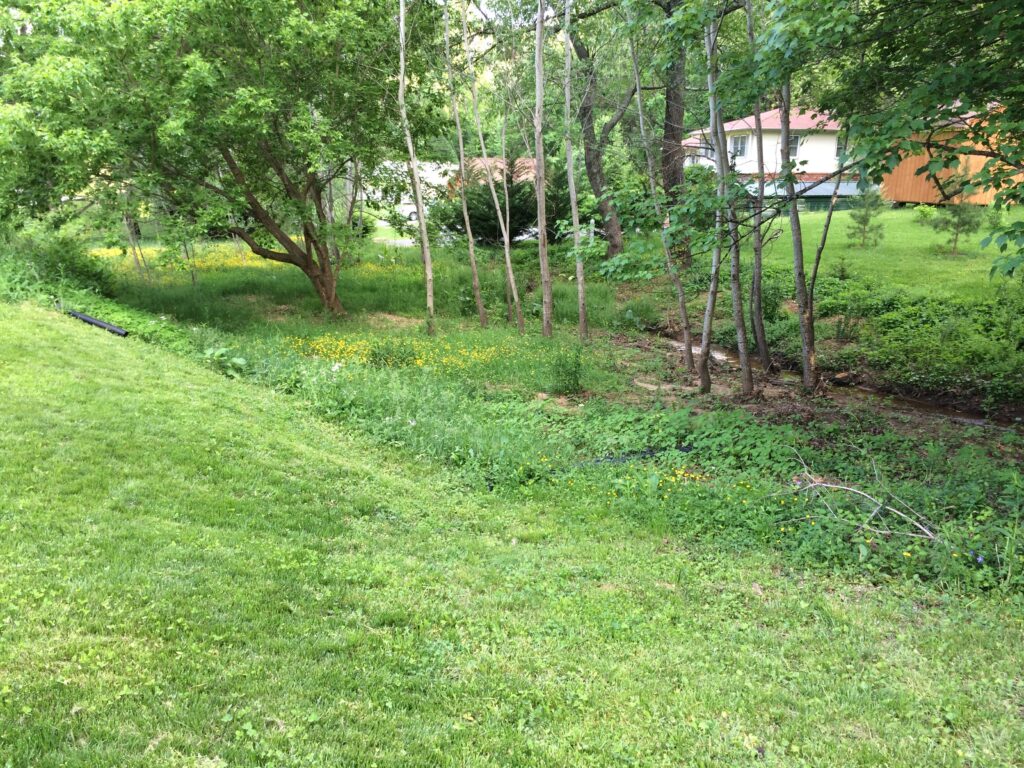It’s conventional wisdom that grass lawns are not green or sustainable. When we built our net-zero house, my husband and I wanted to make very sustainable choices whenever we could. But like a lot of people, we knew that our budget would require our landscape to “evolve” during the first few years in our new home. It turns out that our views on green landscaping are evolving as well.
In this blog I usually write about things I know a lot about and have strongly formed opinions. Today, I dip my foot into uncertain waters. I’m a homeowner trying to make good decisions, not a landscaping expert. Over the past 3 years, I’ve asked myself this question many times: “When you live in a temperate rain forest, is grass an anti-green choice?”
I’ll share some of our experience with the alternatives.
You can embrace the wild. It’s an appealing viewpoint. Who says that every square foot of your yard has to be tamed, anyway? This is essentially what we’ve done in the back of our yard, which floods at least a half dozen times each year. A stormwater engineer actually told me we’re probably doing the community a valuable public service by allowing all that stormwater to filter through our vegetation before it gets to the nearest stream. It’s easy, and it doesn’t look terrible. It made becoming a certified Wildlife Habitat a piece of cake. Do you have dead logs for animals to live under? Why yes, one floated in last summer.
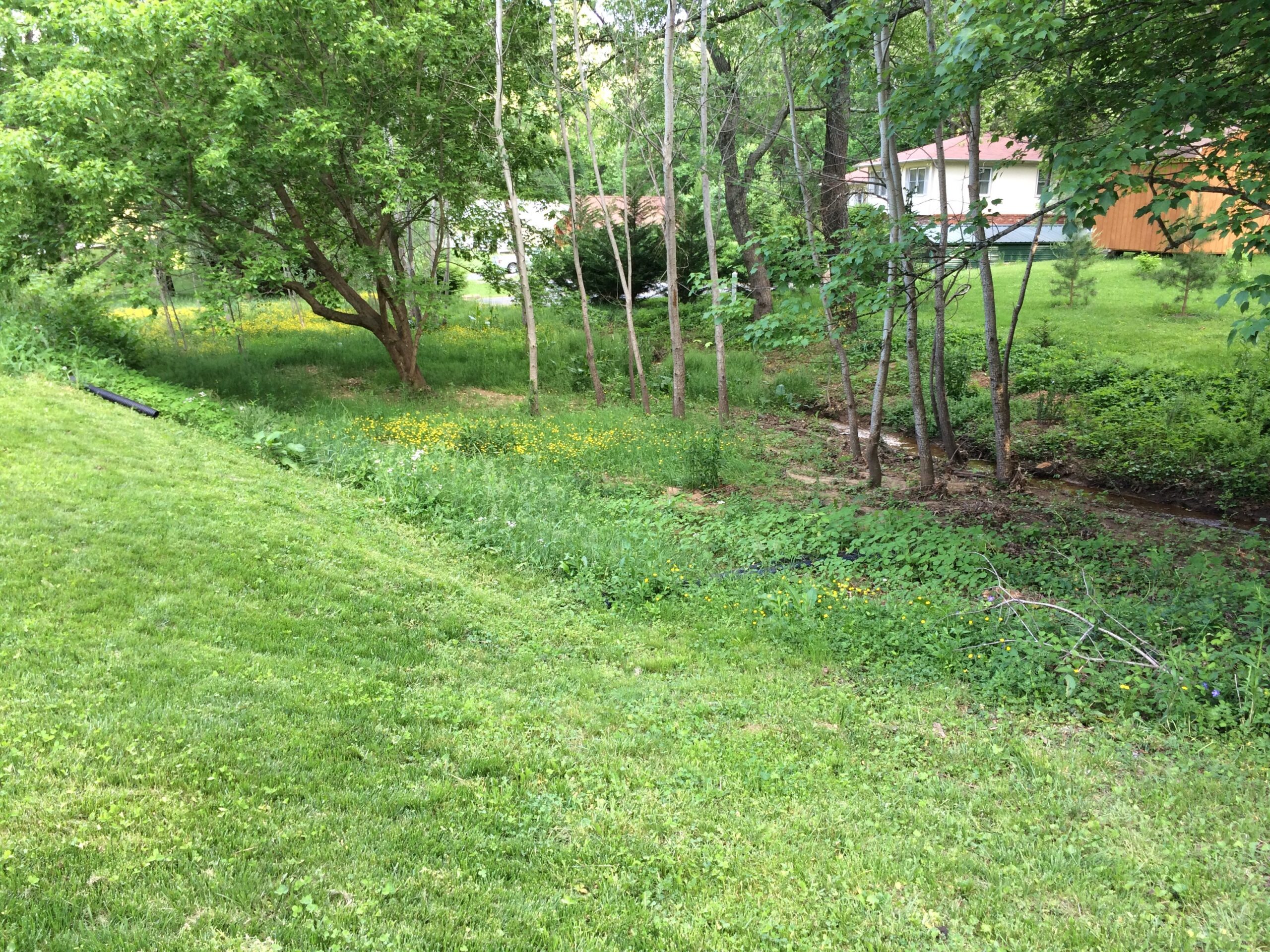
There are downsides to embracing the wild. We live in a rain forest. Everything grows here, and a lot of it is invasive stuff that was never supposed to be here to begin with. It’s hard to create a containment zone for kudzu or multiflora. You try, but it crawls out at an amazing rate and you can spend all your time beating it back. After a while you start to realize that your “hands off” landscaping is an awful lot of work.
You can try planting a cover crop that’s not meant to be mowed. A field of wildflowers or tall grass sounds great, and it could be really pretty. There’s only one problem (or a thousand tiny little problems, depending how you look at it): ticks. In our neighborhood any grass more than 6 inches long is so full of ticks that if the dog even walks past it you find them daily in your house, on your dog, or on yourself. We tried a wildflower meadow for one summer and promptly abandoned that idea. If you’re never going to walk in there and don’t have a dog, maybe this could work. It’s not for us.
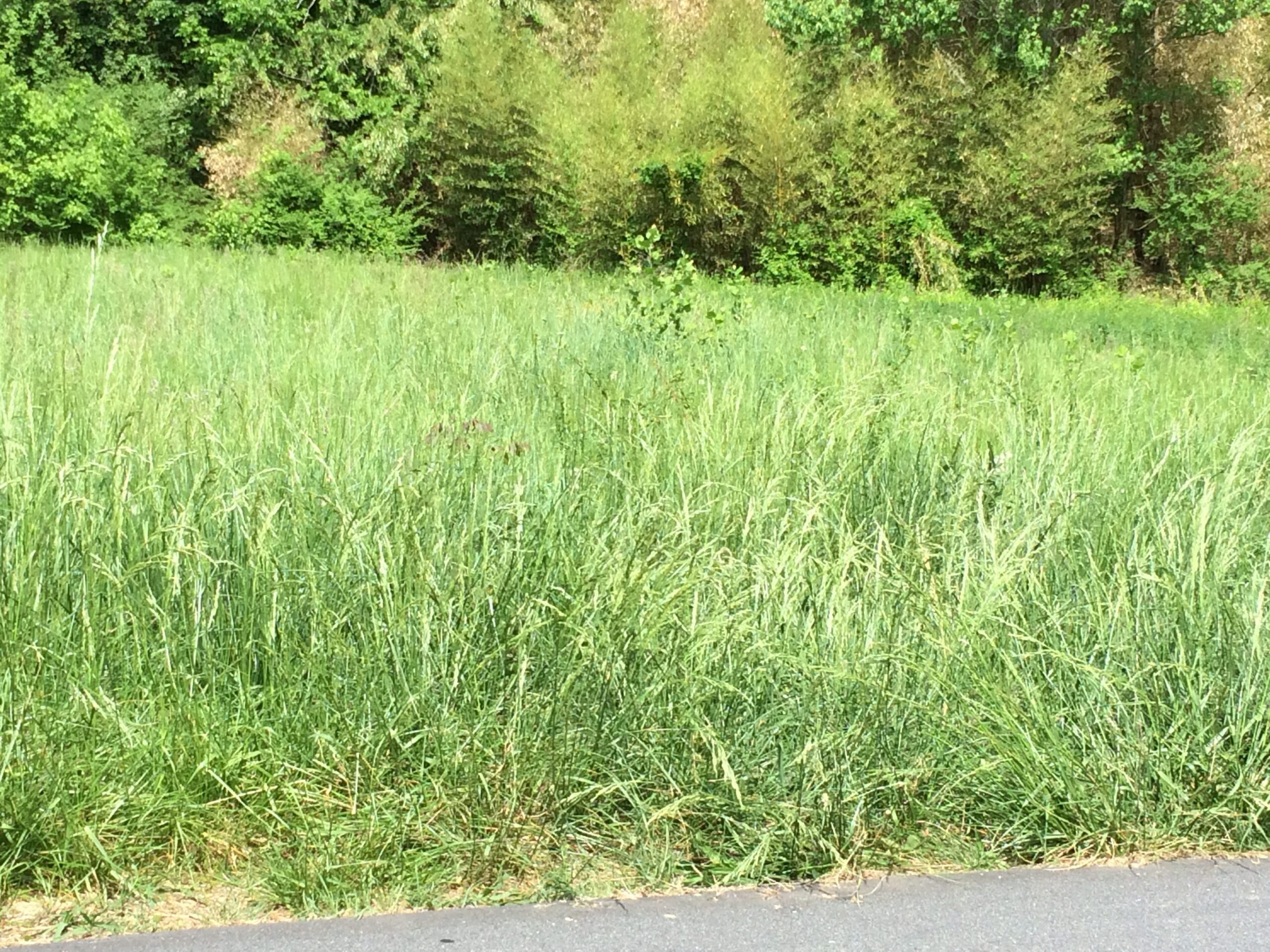
You can go the landscaped route and try landscape mat with mulch and a drought resistant, native landscape. We like this approach and are using it in much of our yard with success. It’s just a little much to install and maintain for our entire yard. One pitfall is that most people don’t install enough plant material and it can get weedy in between. I think a lot of people resort to using pesticide, but we feel like that defeats much of the purpose of having a grass-free yard. I swear I saw my neighbor out one day killing weeds with a blow torch. I have a lot of empathy for that approach. It’s going to take some time to get ground cover going, and I think it’s always going to take a certain amount of weeding, but I think once we get a dense garden established, we can keep it going with reasonable effort and re-mulching.
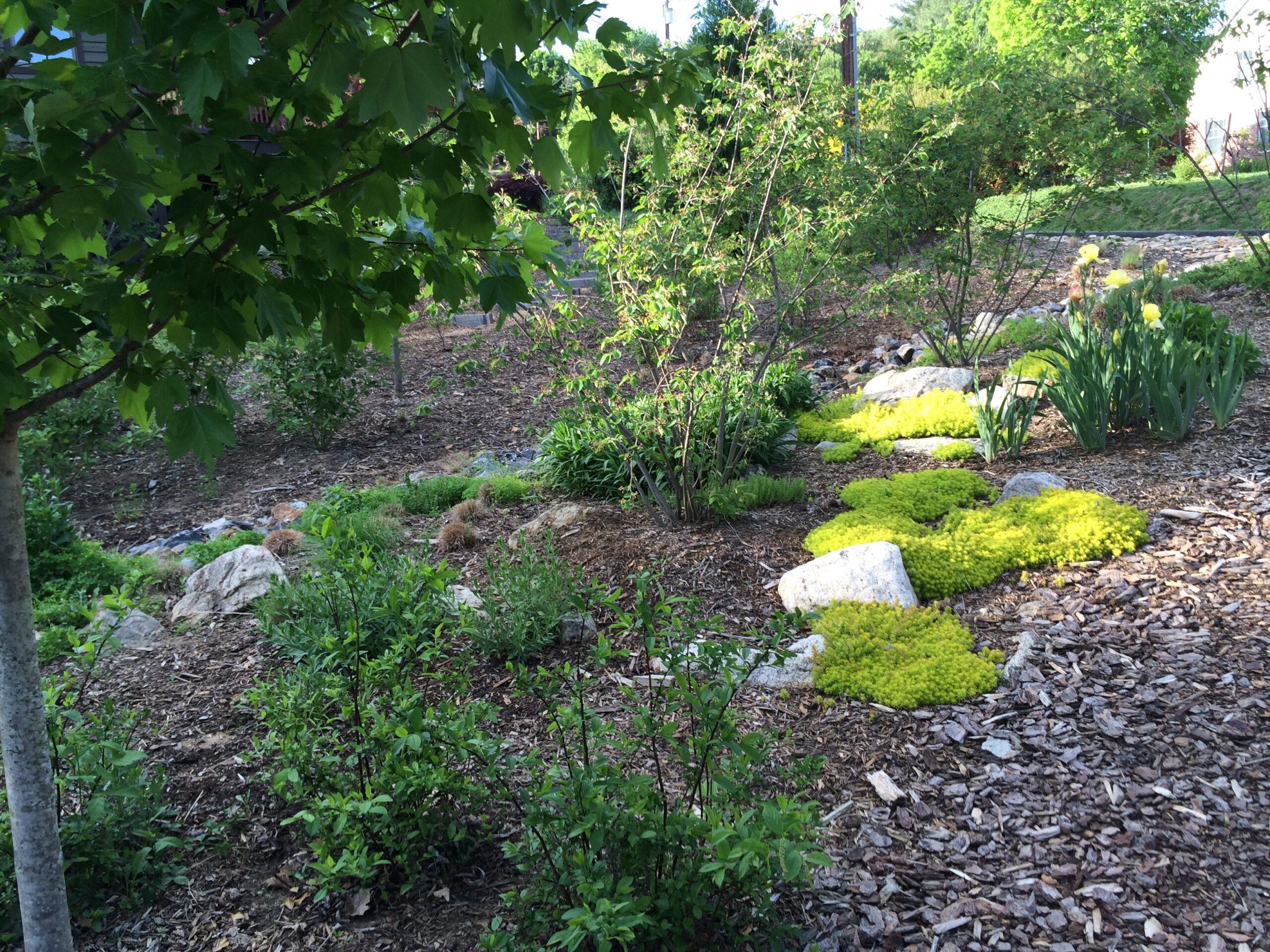
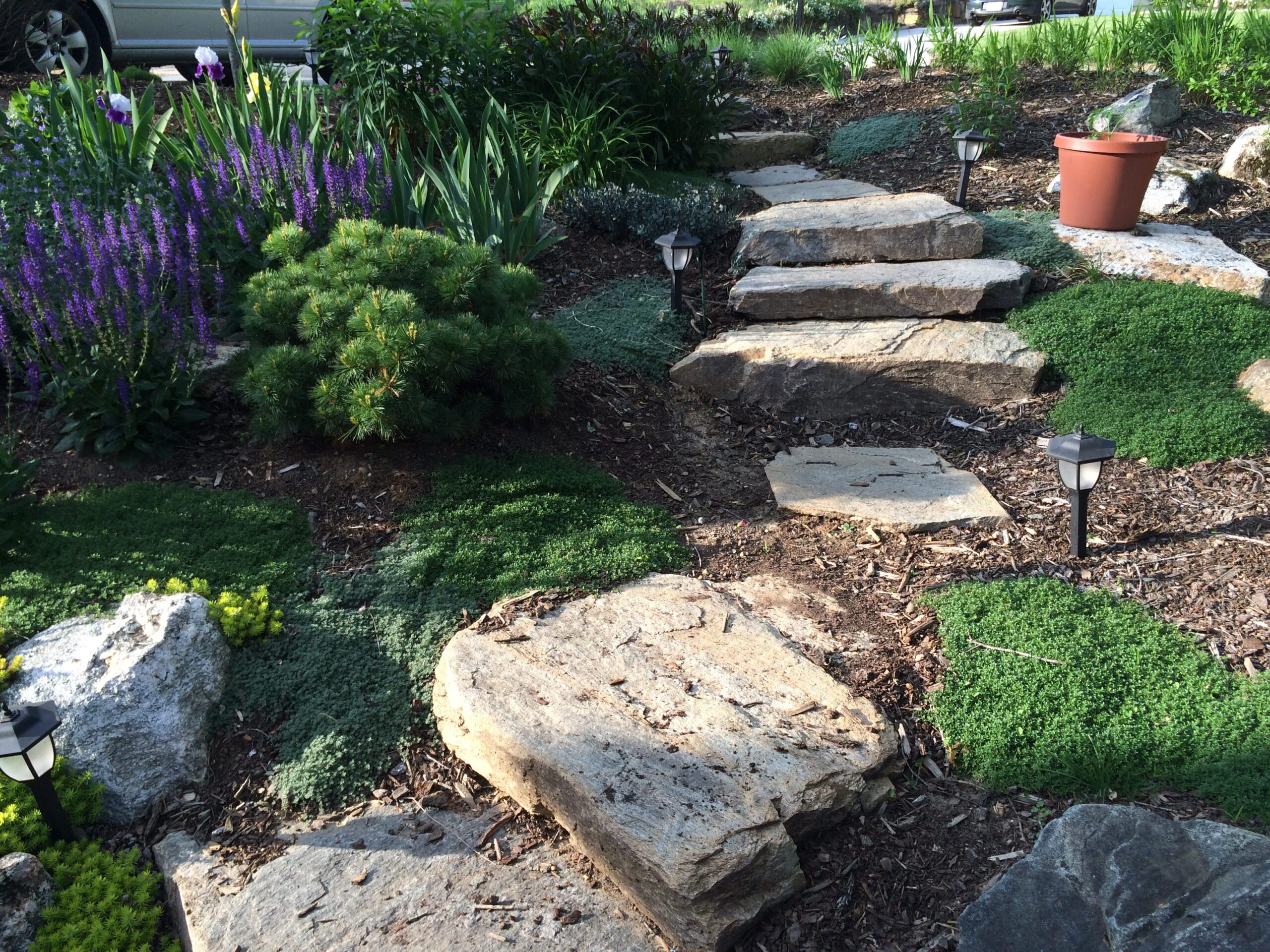
I think a lot of people expect mulched landscapes to be less maintenance, but that can go wrong. If you use landscape mat, the mulch can wash off and leave you with exposed black fabric, which is less attractive than weeds. If you get coarsely ground mulch, over time you’re left with a bunch of big washed-out looking sticks in the yard, which isn’t the best look either. And if you go with fine-ground mulch, in about 2 years you’ll discover that it pretty quickly turns into compost and weeds love growing in it (even on top of landscape mat). And it does take money and effort to buy and spread additional mulch. Is it less than mowing? Not sure. Probably more money, but at least you don’t have to do it every week.
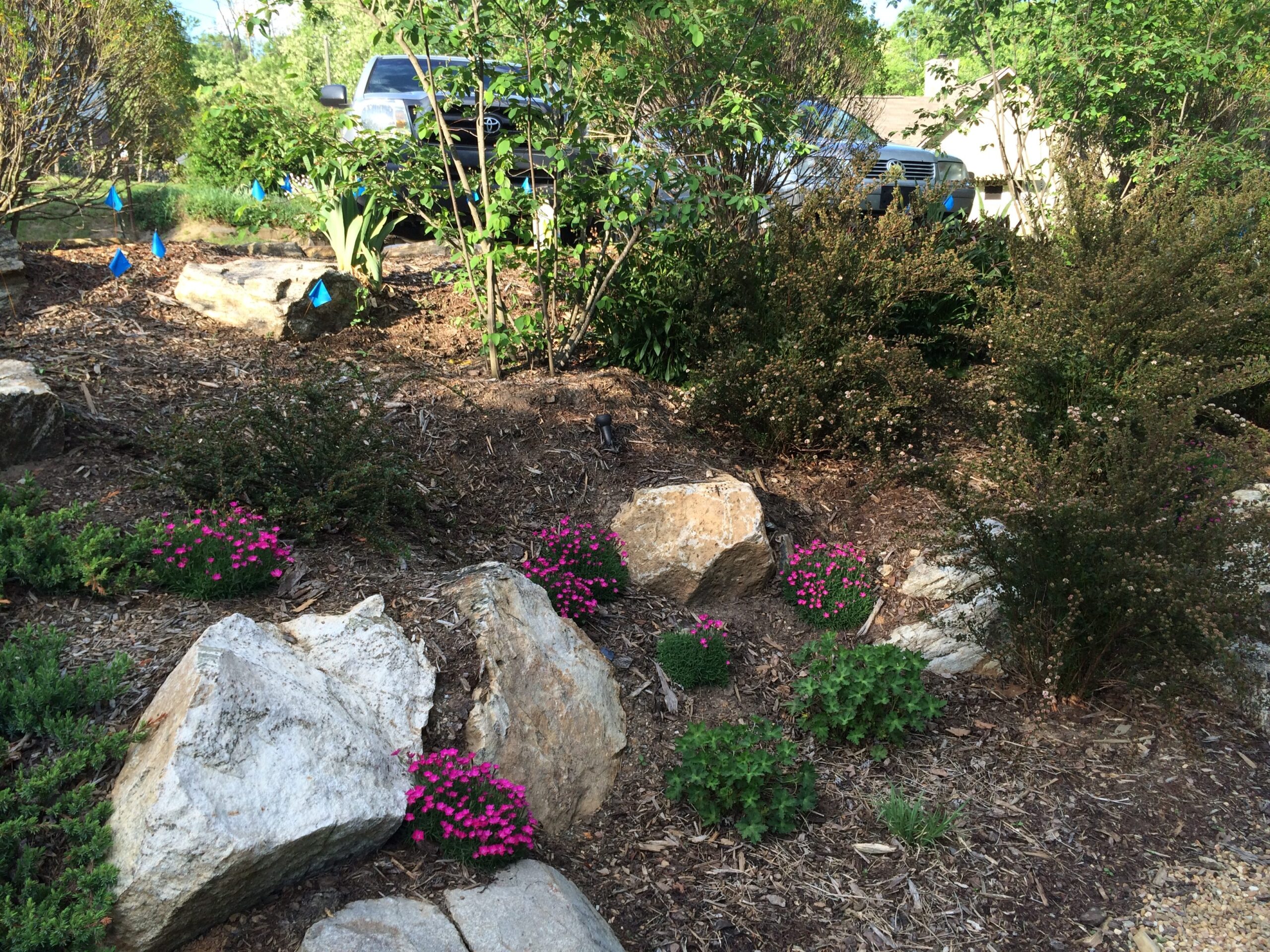
There’s also what I call the “stones approach”. So far we’ve only resorted to this for pathways, but I must admit it has some appeal, at least for parts of our back “patio” area that we haven’t really attacked yet. It’s currently mulched, and last weekend we set up a large tent so we could weed it in the shade. That’s going to get old. It’s not totally immune to weeds, can wash in a storm, and will probably also need replenishment. But it’s a little less maintenance on all these fronts than mulch.
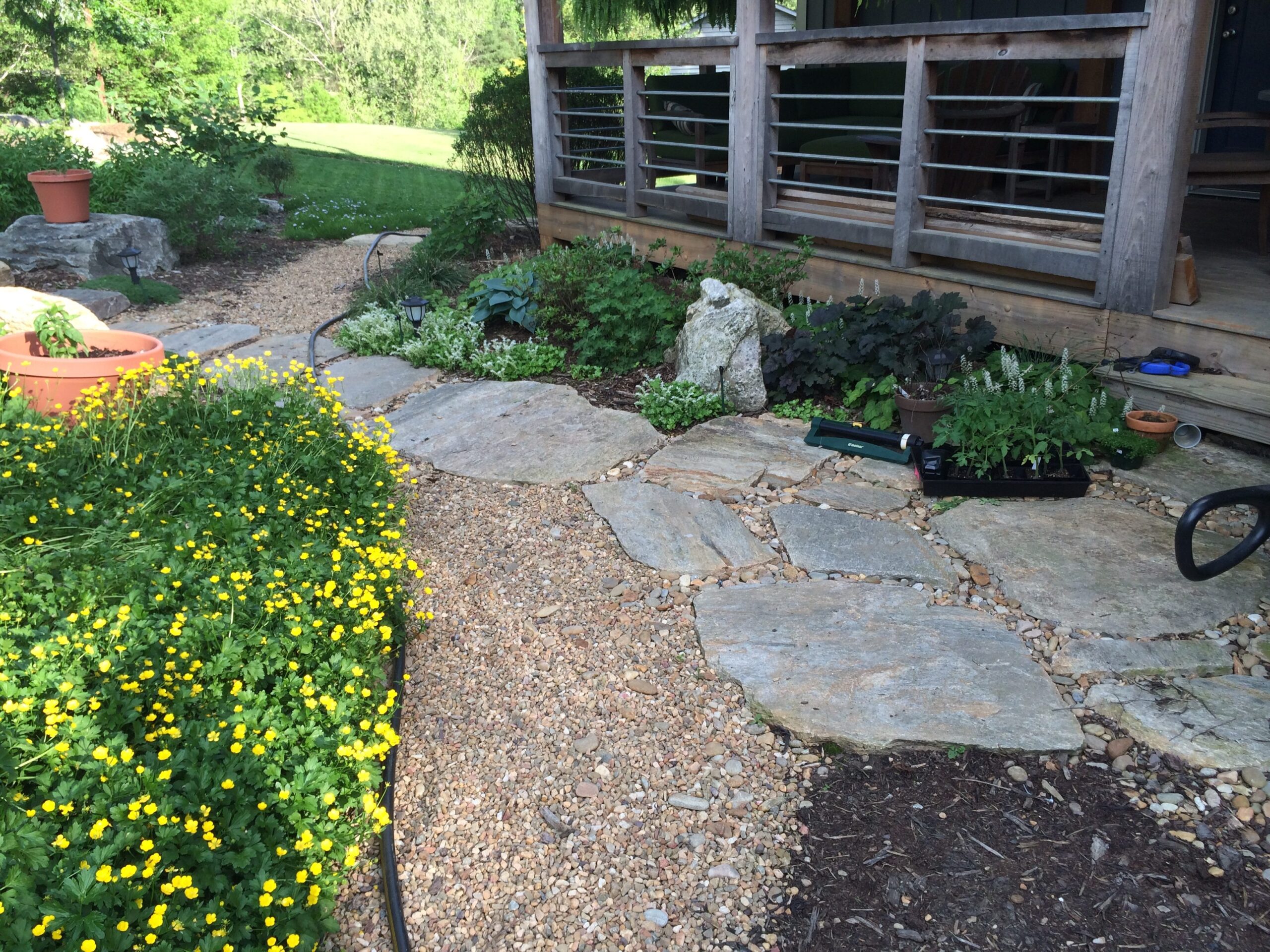
No-mow or low-mow grasses are an option that I admit we haven’t tried. I like it as an idea, but you really have to commit to it. If we were going to do this, we’d need to kill everything and sod the area. It’s not cheap. A friend of mine spent $5,000 installing drought-resistant, low-mow grass in her yard.
I have joked about planting the entire yard in mint because it’s green and I know it will grow, and at least it would smell good while mowing it. I’m too afraid to try it because I don’t want the neighbors to hate us until the end of time. And that’s a move that cannot be undone.
Which leaves us with good old mow-able fescue. I can see the appeal. It’s inexpensive and (relatively) easy to get started. If you do it in the right weather you don’t need to water it much. Sometimes the bigger problem is preventing the seed from washing away. Once it’s established, you really don’t need to water it. In a dry year it might get a little brown, but it’s not going to die. If you want it to be weed-free, you do have to use pesticide, but the vast majority of people that I know who have grass don’t really care as long as it’s mostly green. They just mow whatever comes up.
So, regular grass is a cheap, mostly tick-free surface that doesn’t need water or pesticide 95% of the time, as long as you’re not inclined to be a perfectionist about it. The only thing left to object to is the mowing. We have an electric mower and we monitor our power closely, so I actually know how much energy that uses. For our current amount of grass (30-50% of our yard), we use about 800 Watts for 40 minutes per week. Let’s say that’s 26 weeks per year. That works out to about 14 kWh per year. That’s about 8.5 dryer loads. It’s not nothing, but we certainly have bigger power users in the house.
So, I have no conclusions, just ongoing life with our evolving yard. Please use the comments section to educate and discuss.
Copyright 2014. Amy Musser


